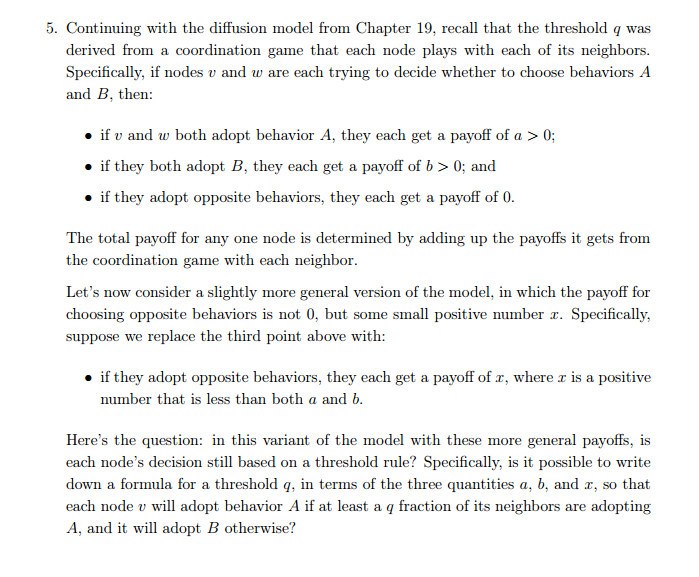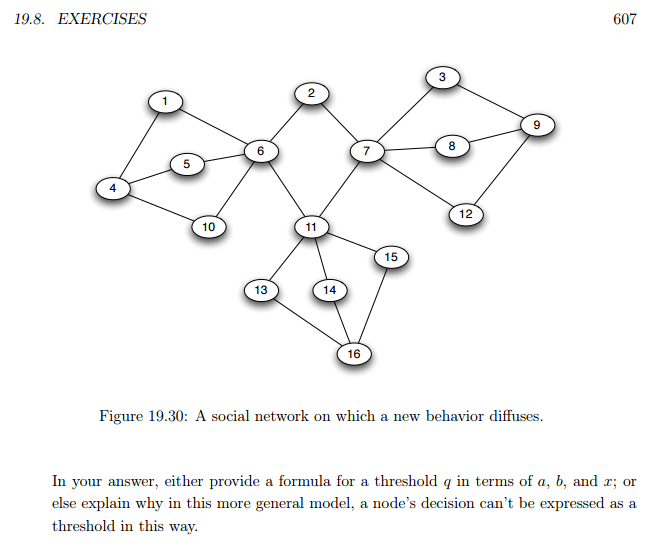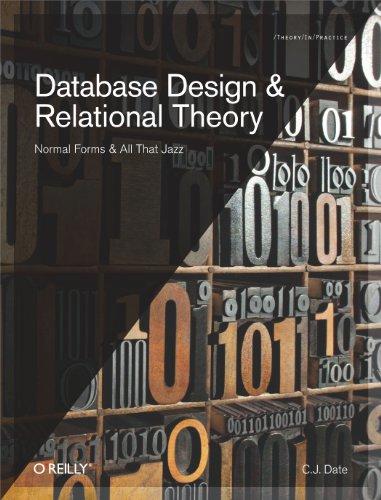

5. Continuing with the diffusion model from Chapter 19, recall that the threshold q was derived from a coordination game that each node plays with each of its neighbors. Specifically, if nodes v and w are each trying to decide whether to choose behaviors A and B, then: if v and w both adopt behavior A, they each get a payoff of a 0; if they both adopt B, they each get a payoff of b 0; and if they adopt opposite behaviors, they each get a payoff of 0. The total payoff for any one node is determined by adding up the payoffs it gets from the coordination gam with each neighbor Let's now consider a slightly more general version of the model, in which the payoff for choosing opposite behaviors is not 0, but some small positive number z. Specifically, suppose we replace the third point above with: if they adopt opposite behaviors, they each get a payoff of z, where z is a positive number that is less than both a and b. Here's the question: in this variant of the model with these more general payoffs, is each node's decision still based on a threshold rule? Specifically, is it possible to write down a formula for a threshold g, in terms of the three quantities a, b, and r, so that each node v will adopt behavior A if at least a g fraction of its neighbors are adopting A, and it will adopt B otherwise? 5. Continuing with the diffusion model from Chapter 19, recall that the threshold q was derived from a coordination game that each node plays with each of its neighbors. Specifically, if nodes v and w are each trying to decide whether to choose behaviors A and B, then: if v and w both adopt behavior A, they each get a payoff of a 0; if they both adopt B, they each get a payoff of b 0; and if they adopt opposite behaviors, they each get a payoff of 0. The total payoff for any one node is determined by adding up the payoffs it gets from the coordination gam with each neighbor Let's now consider a slightly more general version of the model, in which the payoff for choosing opposite behaviors is not 0, but some small positive number z. Specifically, suppose we replace the third point above with: if they adopt opposite behaviors, they each get a payoff of z, where z is a positive number that is less than both a and b. Here's the question: in this variant of the model with these more general payoffs, is each node's decision still based on a threshold rule? Specifically, is it possible to write down a formula for a threshold g, in terms of the three quantities a, b, and r, so that each node v will adopt behavior A if at least a g fraction of its neighbors are adopting A, and it will adopt B otherwise








